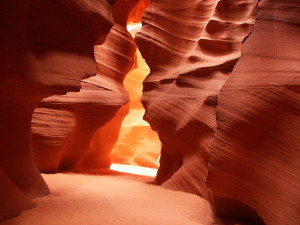As GMs and players we have an odd obsession with time. When it comes to combat, we track it down to rounds of a few seconds, making sure we know who acts when to keep order at the table. We track it as our characters cross expanses of wilderness, caves, or dungeons to gauge when random encounters may occur, when magical effects expire, and when daylight appears or disappears…
But time for world designers is a different beast. Was an area always forest? At what point did the seas form or boil away? How long did a particular type of creature or organization rule unopposed over the landscape?
When this type of question appears, I try to look at time from a different perspective.
If it’s a question involving individuals or small groups of people (families, organizations, and so on), it happens on a much smaller scale. Months, years, decades, or centuries usually. These events occur in the span of mortal lifetimes.
If it’s a question involving civilization, I look at things in terms of decades, centuries, or millennia. This is more of a generational time frame, where organizations can pass knowledge and prejudices over a longer span of time. I also keep in mind the effects of the “telephone game.” Time, like space or any other context, can change how a message is interpreted down the line.
If it’s a question involving nature, I use the same scale but expand it to multiple millennia or even millions or billions of years. Look at how the jungles of many parts of the world have hidden the ruins of fallen civilizations effectively for hundreds or thousands of years. Or how rising waters have swallowed entire portions of continents. The landscape of the dinosaurs was far different than what we see today.
If it’s a question involving geology, it gets expanded to the wide end of the time spectrum as well unless the world is technologically adept at terraforming. Tectonic plates can shift. Mountains rise. Land falls into the sea. Rivers carve canyons. Glaciers advance and recede creating valleys.
As GMs we are in a great position to use time as another tool in the box. Do we want a culture to be in decline after ruling the world for thousands of years? Figure out where they were at the height of their empire and then determine how that has been whittled away year by year, decade by decade, century by century.
Or imagine a world in the throes of great geologic change where land bridges form and dissolve, allowing civilizations and animal populations a way to shift and become isolated over time, changing from what they were in the beginning.
Brian “Fitz” Fitzpatrick is a Software Engineer who manages (or is that mangles) Game Knight Reviews and tinkers with writing game materials via his Moebius Adventures imprint. When he’s not writing about gaming, he’s actually gaming or at least thinking about gaming in some capacity. During the non-writing, non-gaming time he’s likely trying to keep up with his wife and two daughters or wrangling code for a living!

